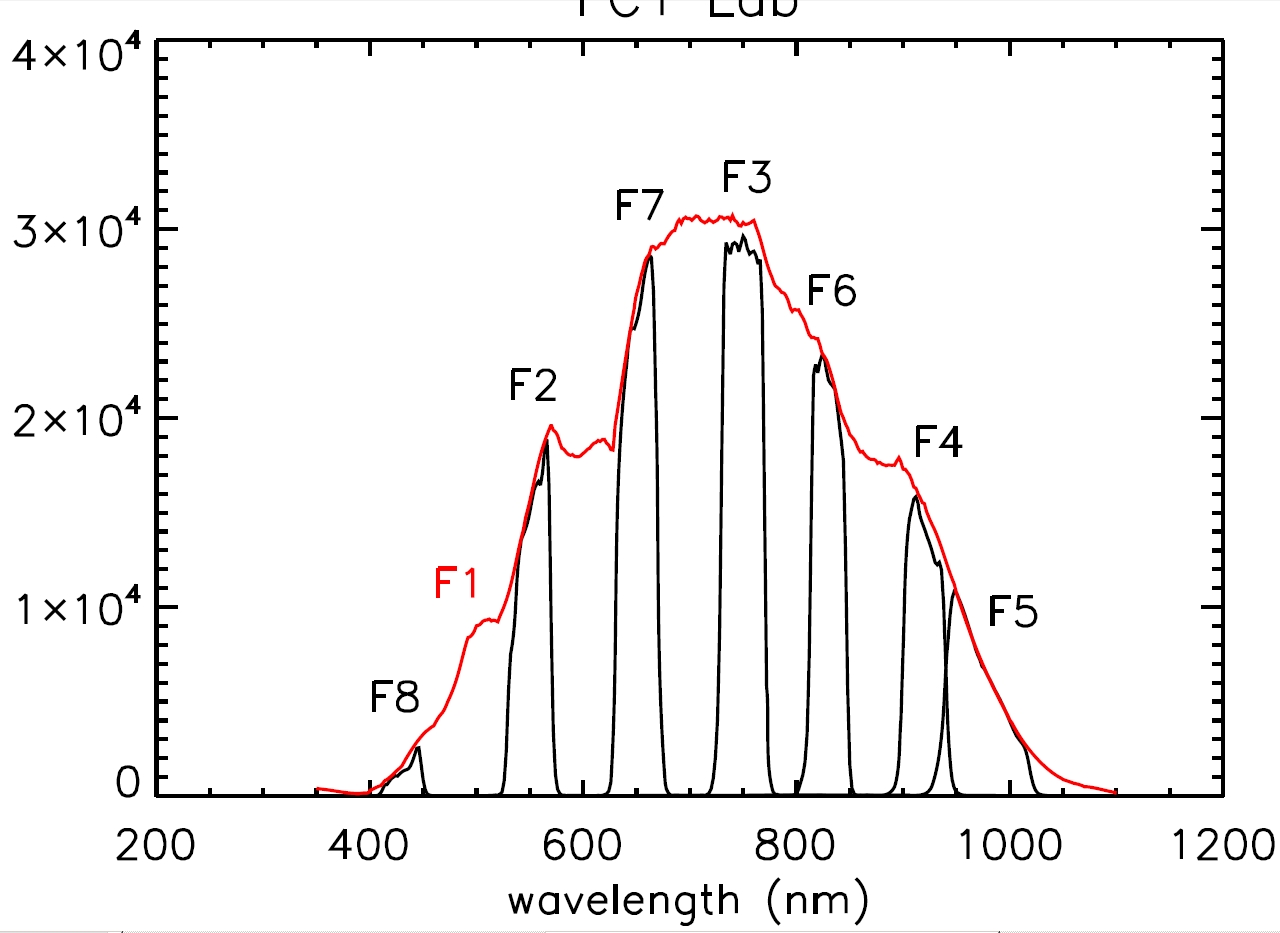
Figure 1. Framing Camera filter pass-band response as influenced by CCD QE and other optical transmissions.
This web page describes a justification for ground-based measurements of Vesta using the Dawn Framing Camera (FC) filters. When Vesta observations were made the calibration of the FC filters was suspect, so an empirical calibration was made based on the Johnson-Cousins standard star system. Because the FC bands (#2 through #8) had different effective wavelengths and widths this method of calibration was subject to uncertainties that could not be straight-forwardly determined. It is possible to re-calibrate the Vesta results using ground-based measurements of Vesta with a duplicate set of the FC filters. This will entail creation of new magnitude system for each of the 7 narrow band FC filters, with carefully determined conversion coefficients for magnitude to flux equations. Vesta flux [watts/m2/nm] will be determined as a function of Vesta phase, which will provide the needed comparison with Dawn FC observations of Vesta versus phase angle. As a bonus, these ground-based measurements will produce Vesta albedo vs. wavelength (without the need of normalizing). These characterizations of the FC filters should also provide confirmation of the recently-published in-flight re-calibration of the Framing Cameras prior to orbit of Ceres.
Shortcomings of BVRcIc Scheme for
Calibrating FC
The FC passbands are given below.

Figure 1. Framing Camera filter pass-band
response as influenced by CCD QE and other optical
transmissions.
A listing of the filter pass-bands
(prior to CCD QE response) is given below.
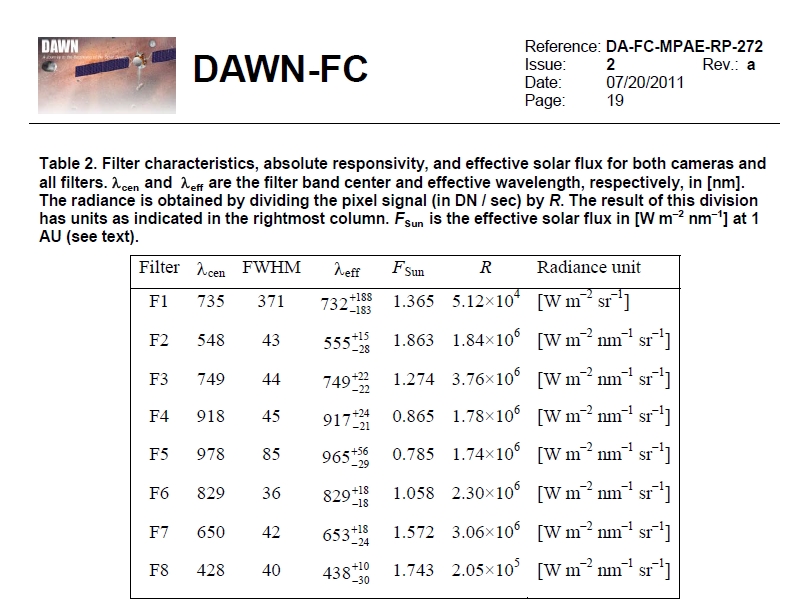
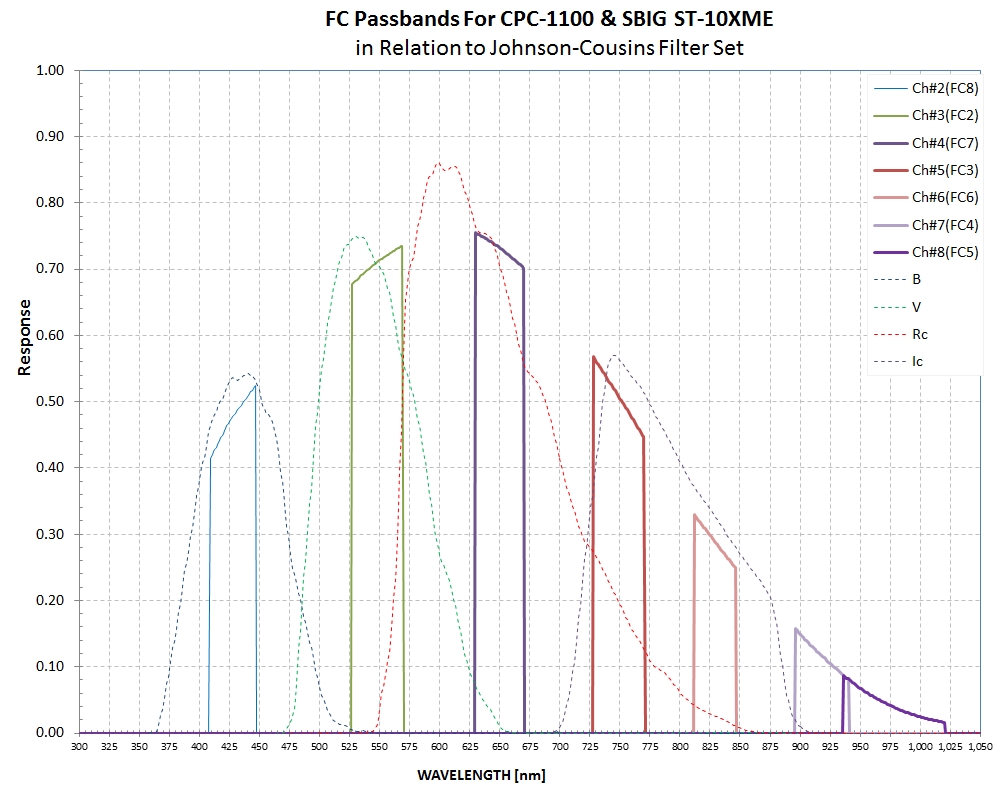
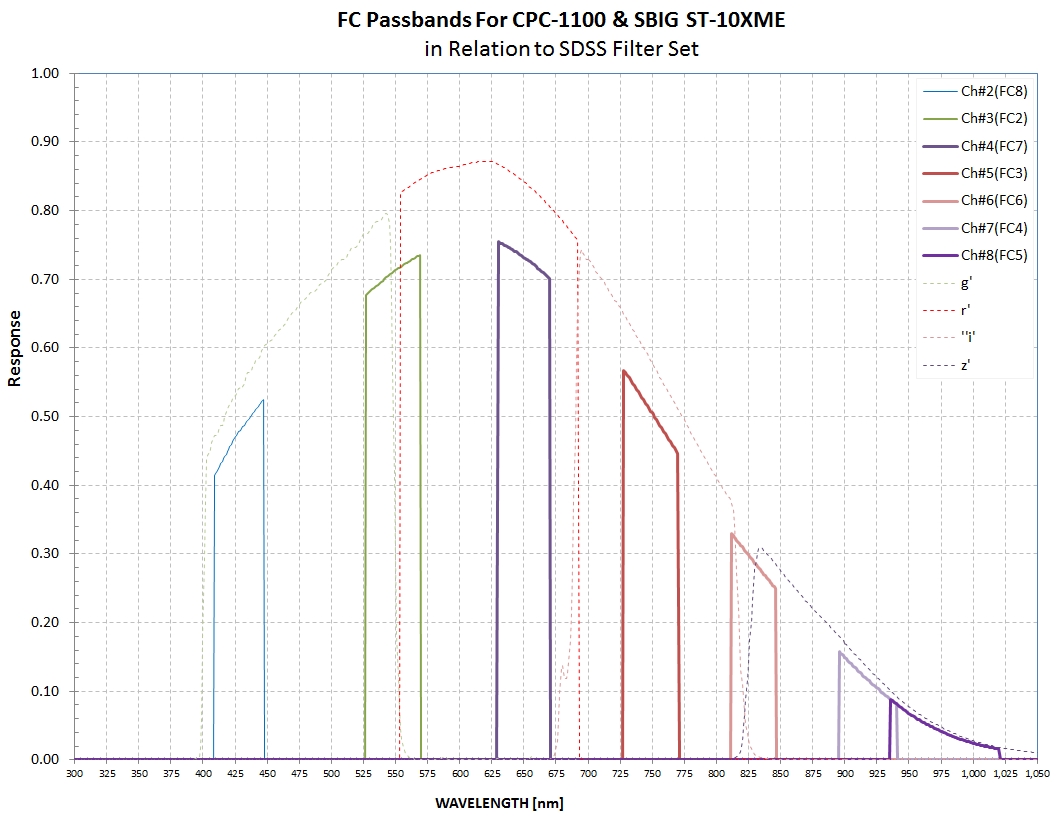
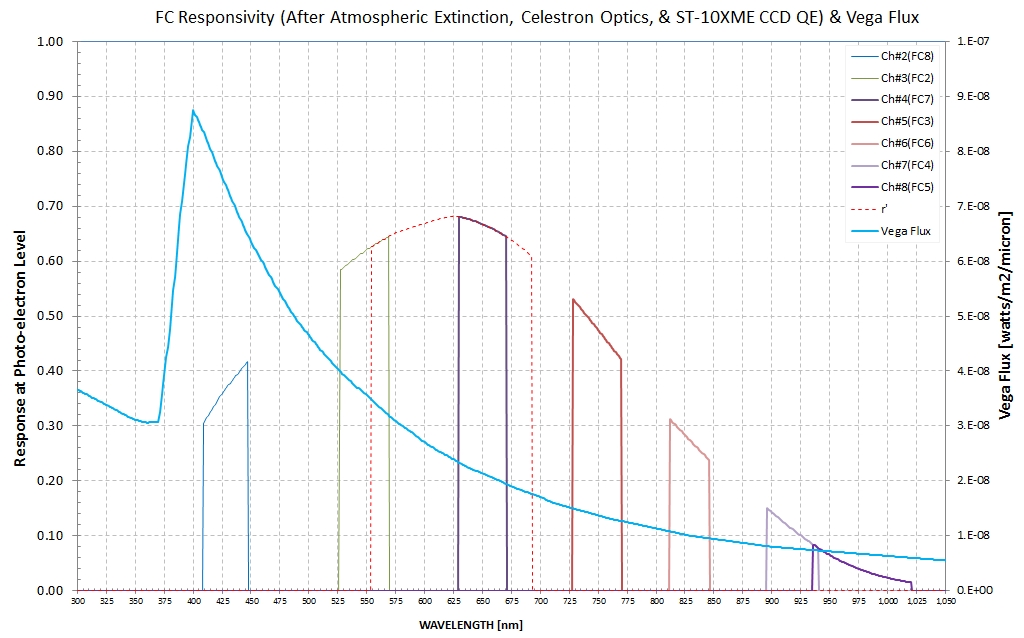
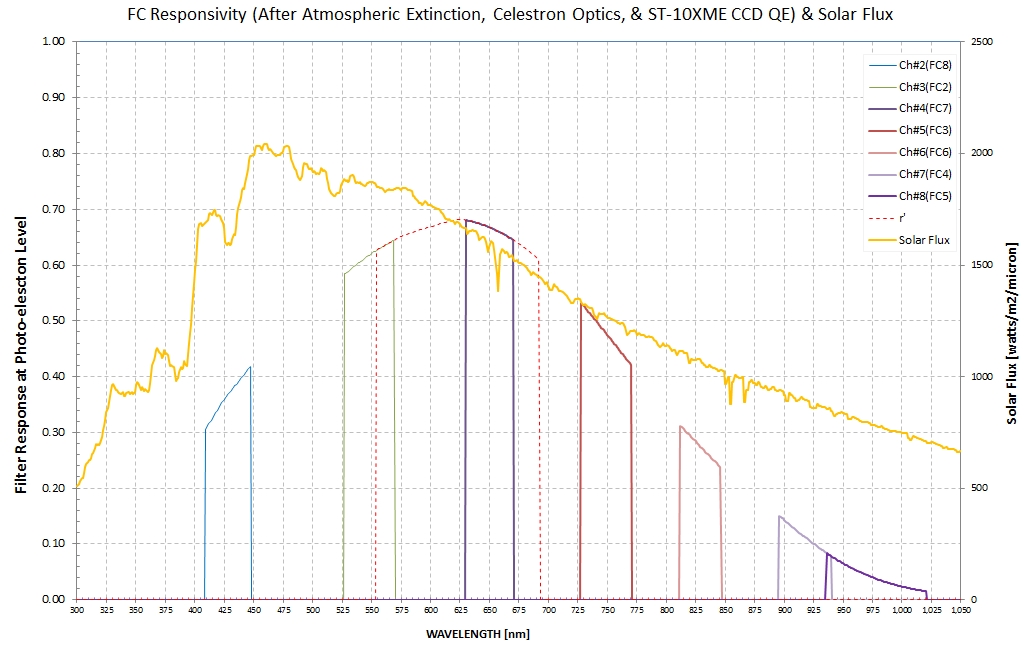
Both Vesta and Ceres have
disk-averaged measurements (total Data Number, DN) for each FC
filter. This information is for specific phase angle viewing
geometries. If actual albedos for Vesta and Ceres were known as
a function of phase angle for each FC filter then the Dawn FC
measurements could be adjusted to agree with "ground-truth." By
"ground-truth" is meant determination of albedo using
ground-based observations with an identical set of FC filters,
as a function of phase.
The goal of the proposed
ground-based observations is disk-average fluxes [watts/m2/um]
for a suite of observations that sample a range of viewing
geometries. Fluxes can be compared with solar incident flux for
each observing situation to determine albedo (for that FC band
and at that phase angle). These data can be modeled, and
predictions can be made for any Dawn disk-average DN, for the
specific FC band and viewing geometry that applies. Any required
adjustment to a FC channel will appear as a persistent
coefficient that should be multiplied to the default Dawn FC
flux in order to achieve agreement with the ground-based model
flux.
The ground-based observations
will require the creation of new magnitude systems for each FC
band. Vega will be used as a primary standard for establishing
zero magnitude (above the atmosphere). Secondary standard stars
will be calibrated using Vega: two A0V stars (same as Vega) and
several sun-like stars. These secondary stars will be located
close to the position of Vesta and Ceres for their 2014
oppositions (they're close together in the sky, so their
oppositions are in mid-April). This will permit easy calibration
of Vesta and Ceres using the nearby (same air mass) secondary
standards. A description of how this will be accomplished is in
a white paper, "Deriving a Magnitude System," available from
Bruce Gary (this web site's webmaster). All measurements will be
made with a Celestron 11-inch (CPC1100), with a 10-position CFW
and SBIG ST-10XME CCD, all inside a dome in my backyard that is
controlled from inside my house.
This site opened: 2014.03.15 by Bruce L. Gary (B L G A R Y at u m i c h dot e d u). Last Update: 2014.03.18